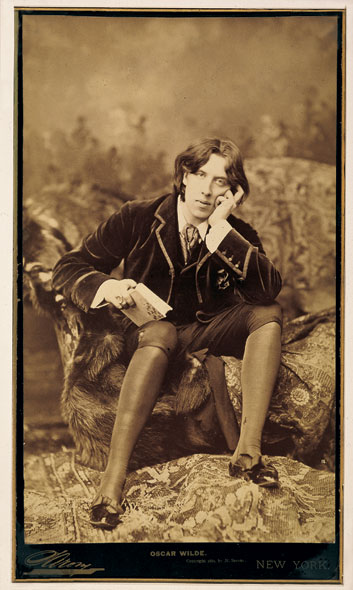You'd hardly call yourself pedestrian, would you?
I mean, after all, you consider yourself quite the gourmand with a sophisticated palate, a gastronome with a penchant for the good life, and an epicurean with impeccable taste, and, if we are speaking frankly, who among your family members and friends wouldn't want to bear witness to the delectable feast that nature has bestowed in the form of this evening's dinner? With such an epic repast before you, why should you deprive the universe itself of experiencing some small inkling of the joy derived from your feast of Dionysus? After all, there is nothing that people want in their own lives more than bearing witness to the petit morsel on which you will shortly be masticating.
So you whip out your smartphone, snap a quick photo, and regale the world with your "life-altering" meal on your favorite social media site: Twitter, Facebook, Tumblr or Instragram. (Yes, I am talking to you, Neil Patrick Harris and my partner's sister.)
But as you send that photo whirling through the ether (or what we in the technical community more commonly call the "spectrum"), consider the following: as the proud "artiste" of that carefully crafted gastronomic still life that you are certain will be appreciated by all your current and future adoring fans, keep in mind that you, as the photographer, own the original copyright to that special gem.
That's right. The fact that you took the photo means that you own the copyright. (Once you post it to a social media site, you may be giving up those rights, depending on the user agreements, but that's another topic.)
The fact that you own photographs by merely snapping the image is due in no small part to a particular photograph taken in the 1800s of a fabulous gay man by his eccentric photographer, both with a propensity for flamboyant dress.
The story starts with Napoleon, not Bonaparte but an eccentric photographer named Napoleon Sarony, who, along with his wife, had a penchant for dressing in costumes and parading around New York City during the early Belle Époque period of the late 1800s. (Did they even call it the Belle Époque in New York City at that time, or was it only Paris? Am I merely being pretentious? Anyhow, I digress.)
Sarony would pay celebrities to sit for him and then retain the rights to the photographs that he took. He would then eventually sell the photos in order to earn a living, a very successful one at that.
For example, he paid famed actress Sarah Bernhardt $1,500 (or the equivalent of $20,000 in today's dollars) to take her picture. He also photographed other well-known celebrities of the time, such as Mark Twain and American Civil War General William Sherman. Apparently, Sarony's studio, located in Union Square, was a sight to behold, as well, as described by Galaxy Magazine in March 1870:
Glare, bareness, screens, iron instruments of torture, and a smell as of a drug and chemical warehouse on fire in the distance. A photographer's operating room is always something between a barn, a green-room, and a laboratory.
And so it was in this green-room-cum-laboratory-cum-barn that copyright history was made with the photograph of one particularly extravagant, outrageous gay man.
"Enter Oscar Wilde," as the Smithsonian Magazine puts it.
In 1882 Oscar Wilde was in the United States on a speaking tour, and as a result of his dress, wittiness and flamboyancy, he became wildly (er, sorry, had to) popular, so he extended his tour. It was during this time that Wilde sat for a series of more than 25 photographs for Sarony, who called Wilde a "picturesque subject, indeed."
Of these photographs, it would be photo number 18 that would make history and have landmark jurisprudence implications for copyright laws even to this day. The oft-reproduced photo (now preserved in the Library of Congress) is of a contemplative-looking Wilde staring directly into the camera, dressed in a velvet jacket with knee-high knickers. His right hand is holding a book, and his left elbow is leaning on his knee.

Library of Congress
Because of Wilde's popularity, a department store decided to use an unauthorized reproduction of Sarony's photograph number 18 to advertise their new line of hats.
As a result of the unauthorized use, Sarony sued the company, Burrow-Giles Lithographic Co., which had reproduced the photograph over 85,000 times without permission. In the lawsuit Sarony claimed that the lithographic company infringed upon his copyright of Wilde's photo. In the landmark Supreme Court case, Burrow-Giles Lithographic Company v. Sarony, Sarony won his argument when the courts ruled that the photograph was:
[a]n original work of art, the product of plaintiff's intellectual invention, of which plaintiff is the author, and of a class of inventions for which the Constitution intended that Congress should secure to him the exclusive right to use, publish and sell....
So it is altogether fitting that as we celebrate LGBT History Month in October, we also mark the 130th anniversary of the hearing of the October 1883 Supreme Court case that has had profound effects on copyright law, even to this day.
So the next time you endeavor to snap your glorious avant-garde picture of your deconstructed, wheatgrass, raw-food, vegan meatloaf, which has been gently sprinkled with the sparkling fresh spring waters of Himalayan snowmelts, served with abstracted encrusted kale chips dotted with molecular sesame foam, all only to be washed down with diet coke, take a brief moment to pay homage to the photograph of the dandy to whom you owe the privilege of owning the rights to that very photo, and to the eccentric photographer who took his picture.
Oh, one more thing: Because we at the LGBT Technology Partnership pride ourselves on "the importance of being earnest" (too much?), we thought you should know that posting pictures of your food is really rather quite pedestrian!